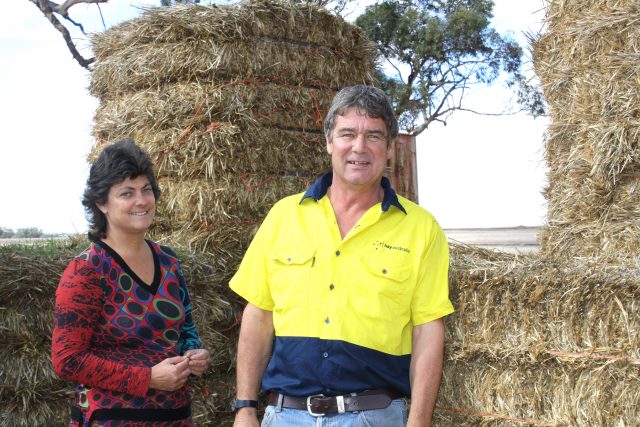Farming can be a risky business. For Suzanne and Steve Woods, Calingiri farmers and part owners of Muchea-based business Hay Australia, the decision to plant hay again can’t be easy after having endured two very tough years.
Despite the risks, the decision still makes sense for many reasons. The market for export hay continues to grow and in a good year the returns can be strong. Steve and Suzanne are united, “We are going to stick to what we know how to do. We have the infrastructure, the staff and the markets to do hay, and so we will continue”.
The global demand for hay is growing. As China’s population becomes wealthier, its demand for milk has surged. There are 14 million dairy cows in China and expected to grow to 20 million in 4 years. According to Steve, an average Middle East, tender can be about 600-800,000 tonnes – that’s almost the entire Australian production by commercial processors.
With these markets in their sights, Steve and Suzanne have commenced planting oats for 2012. Hay Australia partners Troy and Shona McDonald and the Woods will produce about 50% of Hay Australia’s export hay. The rest is bought in from about 20-30 farmers, as far as Three Springs, to Williams down south. Most have recommitted at some level for the 2012 season.
This is bold and brave given the pain of 2011, but it is also a numbers game. According to Suzanne, “2011 was a one-off year, I’ve studied the bureau rain records, every October for as far as they go back, and the rainfall events of last spring only happened once or twice”.
The memories of last year are still close. Steve shares the highs and lows, “We thought it would be an exceptional year up until 10th September – then it rained on a weekly, fortnightly basis until 15th Nov. There was only one weekend when it was possible to bale top grade hay”.
The result was a very disappointing year for most WA farmers, with much hay damaged by the rain. Despite the poor quality of the hay, Steve is confident about 50% of it will be sold to the export markets, albeit modified markets. Unfortunately the rest of it was left to rot or burnt.
Timing is everything with hay, Suzanne shares, “We plant based on historical pattern – you usually get Royal Show rains, so we count back from there, based on different varieties ‘growing days’ we can determine when to plant. We have to get it exact because it has to cure.”
Let’s hope the analysis pays off, and the weather does what it should, and Steve and Suzanne enjoy a great 2012 season.








